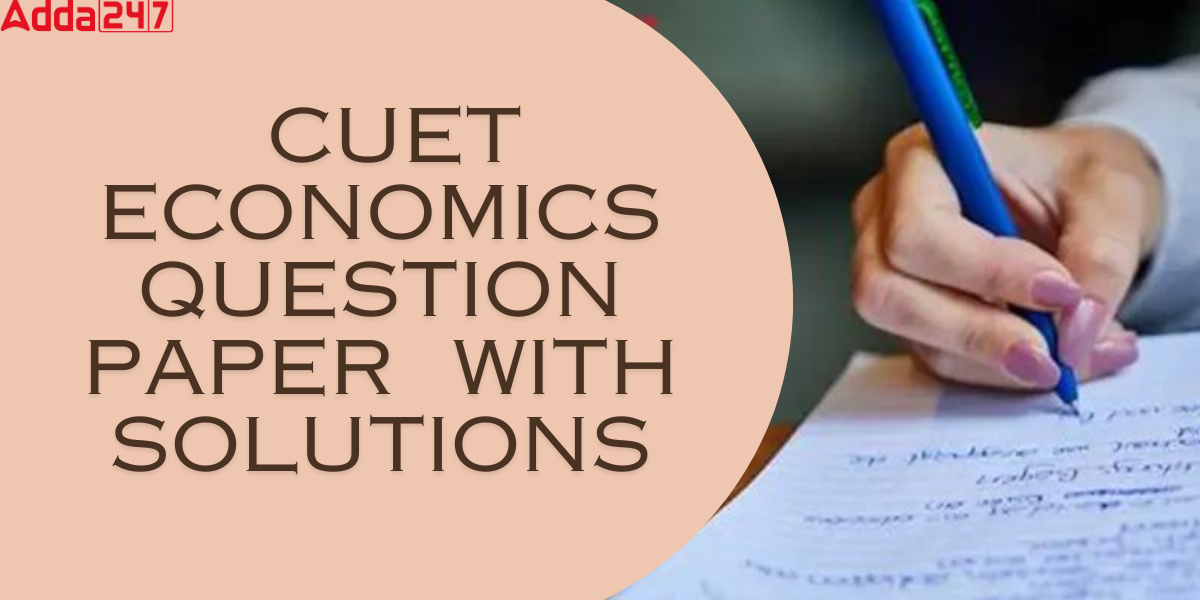The CUET UG 2026 exam for Economics is expected to be held in May or June 2026. The CUET UG Economics question paper 2026 will be made available here after the exam. Candidates who appeared for the test or are going to appear in the future may refer to this page to acquire the CUET Economics previous year Question Paper with solutions that will help them understand the types of questions that are asked. Download CUET UG Economics previous year paper PDFs below.
CUET Economics Previous Year Question Paper
The National Testing Agency (NTA) publishes the official CUET Economics question paper each year on its official website. Candidates preparing for the upcoming exam should work on and complete the CUET question papers to enhance their exam preparation. Working through the CUET Economics previous year question papers will help candidates become familiar with the exam pattern, the nature of the questions posed, the level of difficulty, and additional aspects.
CUET Economics Question Paper 2026
Memory-Based CUET Economics Question Paper 2026 is very important for candidates who are going to choose Economics as a domain subject in CUET. According to the CUET exam pattern, the total marks for the Economics subject are 250. The Economics portion will comprise 50 questions, with candidates obliged to attempt all 50 of them. The CUET Economics Question Paper from last year is given on this page with the solution. Download the CUET Economics Question Paper to familiarise yourself with the exam structure.
Download the CUET Economics Syllabus PDF
CUET Economics Previous Year Question Paper PDF Download
The PDF downloads for the CUET Economics question papers from 2024, 2023, and 2022 are provided below. A link is provided below for candidates to download the question paper.
CUET Economics Question Paper 2025
CUET Economics Question Paper 2024
CUET Economics Question Paper 2022
CUET Economics Question Paper 2023
CUET UG Economics Question Paper Pattern
Learn about the CUET Economics Question Paper & exam pattern in the table below.
| Particulars | Details |
| Name of the Examination | Common University Entrance Test |
| Exam conducting Body | National Testing Agency |
| Examination Mode | Computer-based mode |
| Total Marks | 200 |
| Total Questions | 50 |
| Number of questions to be answered | 50 |
| Duration of the Exam | 60 Minutes |
| Marking Scheme |
|
CUET Economics Question Paper 2026 PDF Download
The NTA releases the official CUET UG Economics question paper during the release of the response sheet. Meanwhile, we will provide the memory-based CUET Economics question paper 2026 on the exam day itself. Students can use those questions and answers to know their exam performance. The official PDF for the CUET Economics question paper 2026 will be updated in this section once it is issued by the National Testing Agency.
CUET Economics Question Paper with Solutions, Previous year
Our subject expert shared the CUET UG Economics question paper with answers below. Please note the highlighted options are the correct answers. Practice these questions to boost your confidence for the CUET 2026 Economics paper.
CUET Economics Question Paper with Solutions PDF
Students who are going to take the CuET Economics Paper next year can download the question paper along with the solutions. Our Expert team provides you the detailed solutions of each MCQ with proper explanations. Download the CUET UG Economics Paper with Solutions Now and start practicing.
CUET Economics Question paper with Solutions










 CUET General Test Syllabus 2026 (Latest)...
CUET General Test Syllabus 2026 (Latest)...
 CUET Chemistry Syllabus 2026, Download O...
CUET Chemistry Syllabus 2026, Download O...
 CUET Computer Science Syllabus 2026, Dow...
CUET Computer Science Syllabus 2026, Dow...







